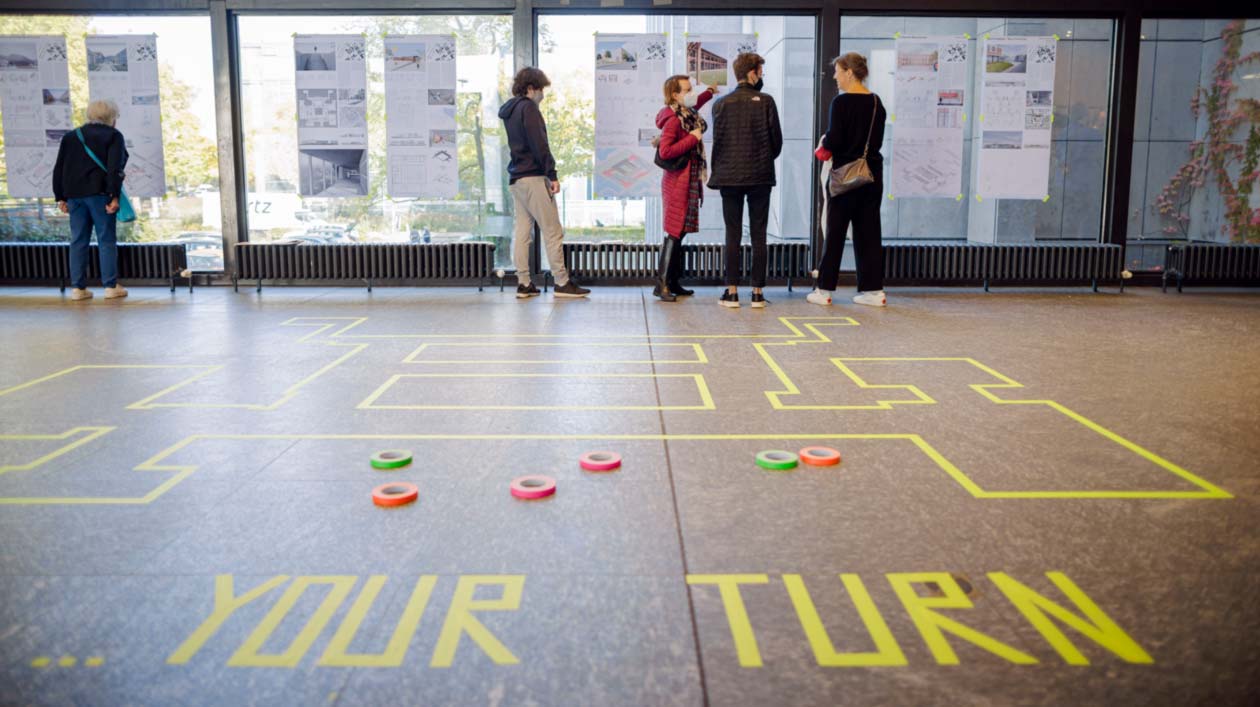“It’s about time!” – A Day at the Dahlem Research Campus: Kick-Off for a New Type of Research Center
News from 10/24/2022
On October 7, the time had come at last: the new research campus in Dahlem opened its doors to the public for the first time and offered a preview of the future shape of the well-known museum ensemble.

For two years now, a group of seven SPK institutions has been examining the question of how research can be viewed in a different light and made visible to the general public. These seven partners at the Dahlem Research Campus are the Ethnologisches Museum (Ethnological Museum), the Museum für Asiatische Kunst (Asian Art Museum), the Museum Europäischer Kulturen (Museum of European Cultures), the Institut für Museumsforschung (Institute for Museum Research), the Ibero-Amerikanisches Institut (Ibero-American Institute), the Rathgen-Forschungslabor (Rathgen Research Laboratory) and the Kunstbibliothek (Art Library). The Dahlem Research Campus is also involved in a strategic partnership with the Freie Universität Berlin: together, the two institutions are developing and testing new approaches to learning and instruction for the collection-based research in Berlin-Dahlem.
The stakeholders have now presented their ideas for the first time and invited public participation during a day of activities organized under the motto “It’s about time.” In choosing that catchphrase, the team was alluding, with a touch of self-mockery, to the impatience that many Berliners, including themselves, feel when they look to Berlin-Dahlem as a museum location. What is going to happen here now that the Humboldt Forum has opened?
The title “It’s about time!” also referred to something more, of course. It invokes the subject of time, a topic to which the Dahlem Research Campus is currently dedicating itself in an exhibition workshop sponsored by the Prussian Cultural Heritage Board of Trustees. The objective of the project is to open up the research process for external parties and non-academics. On October 7, participatory formats were set up and tested in order to enter into a dialogue with the public and incorporate their insights regarding the subject of time: two workshops, for example, dealt with the role played by the senses in the perception of time – the senses of taste and smell, in particular. In participatory stations, visitors were invited to curate a small exhibition on the subject of time themselves and share their ideas on the topic. Finally, visitors offered their views at an interview station, which created video recordings of the results, both as research material and as a project archive to be presented later on in an exhibition.
There were many other things to explore as well. One example was the presentation of the project “Reconfiguring the Past – Visions for a Dahlem Research Campus.” In this project, architecture students of the Technische Universität Berlin examined the question of what a museum of the future could look like and how one might conceive of a research campus in Berlin-Dahlem. Members of the public were also invited to sketch out their own vision for the Dahlem Research Campus.
The various opportunities to gain a glimpse behind the scenes proved quite popular among the visitors. In a tour through the restoration workshop of the Ethnologisches Museum, for example, they were able to learn more about the work steps followed by the conservators. There was also a Science Slam where researchers introduced their current projects and demonstrated how diverse and entertaining the collection-based research is at the SPK.
The day of activities formed the starting point for an exhibition project that encompasses all of the Staatliche Museen zu Berlin (National Museums in Berlin). It is called “Reunited: Visiting the Staatliche Museen zu Berlin, 1992–2022.” To celebrate the thirtieth anniversary of the reunification of Berlin’s museums, a participatory exhibition was created in public areas. The exhibition sites present visitors’ memories of their experiences in the museums.

